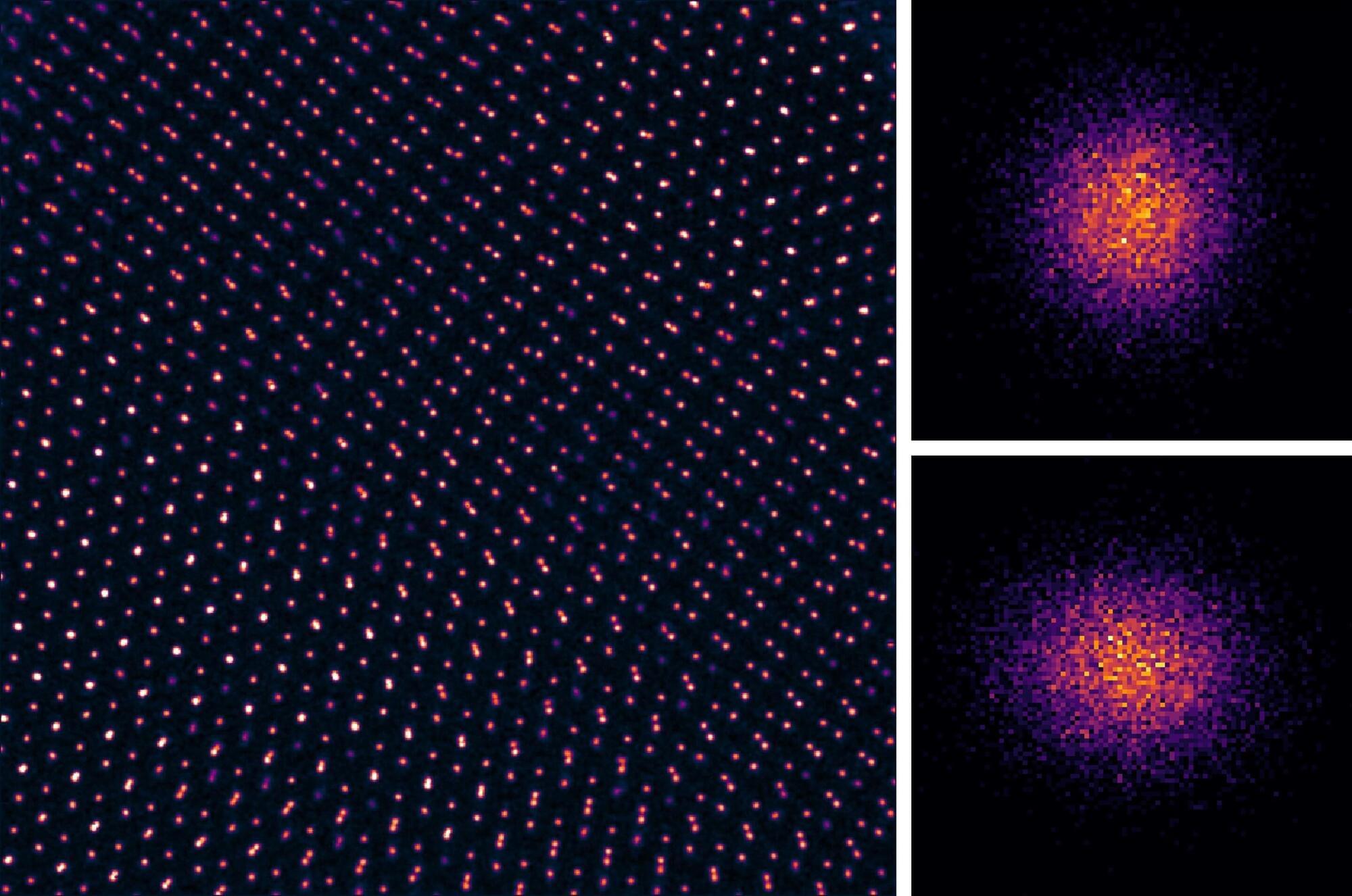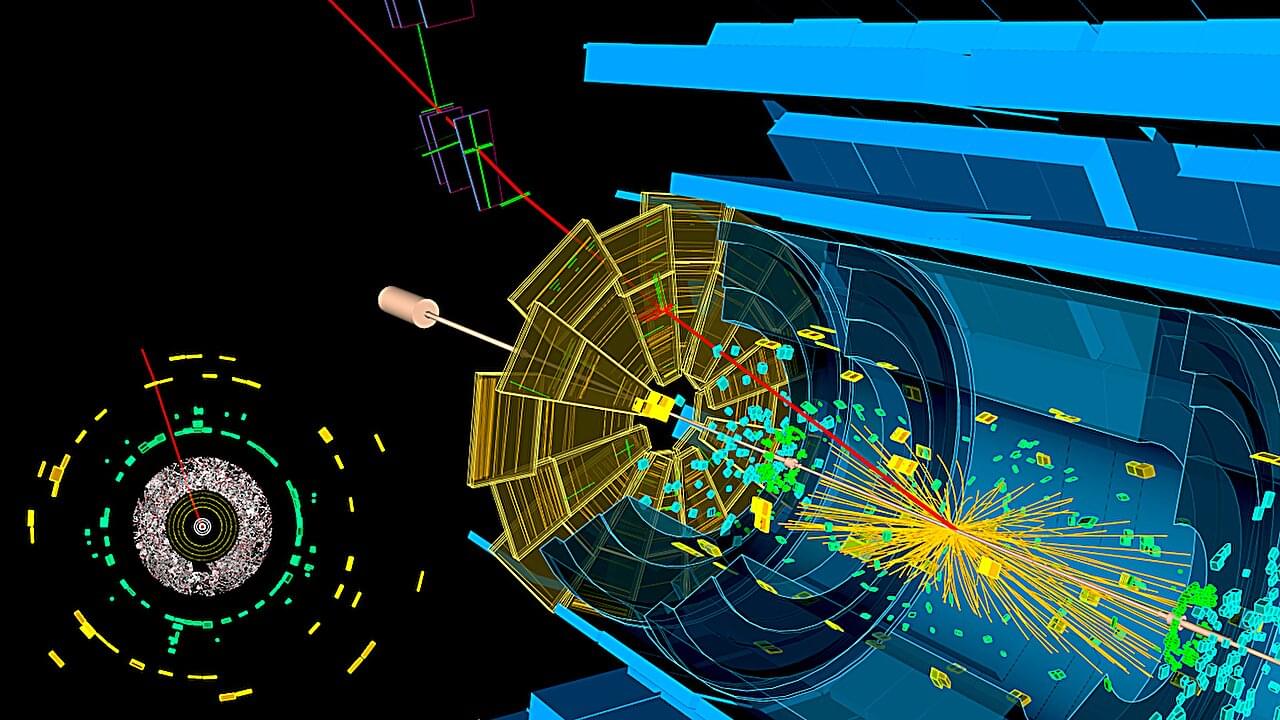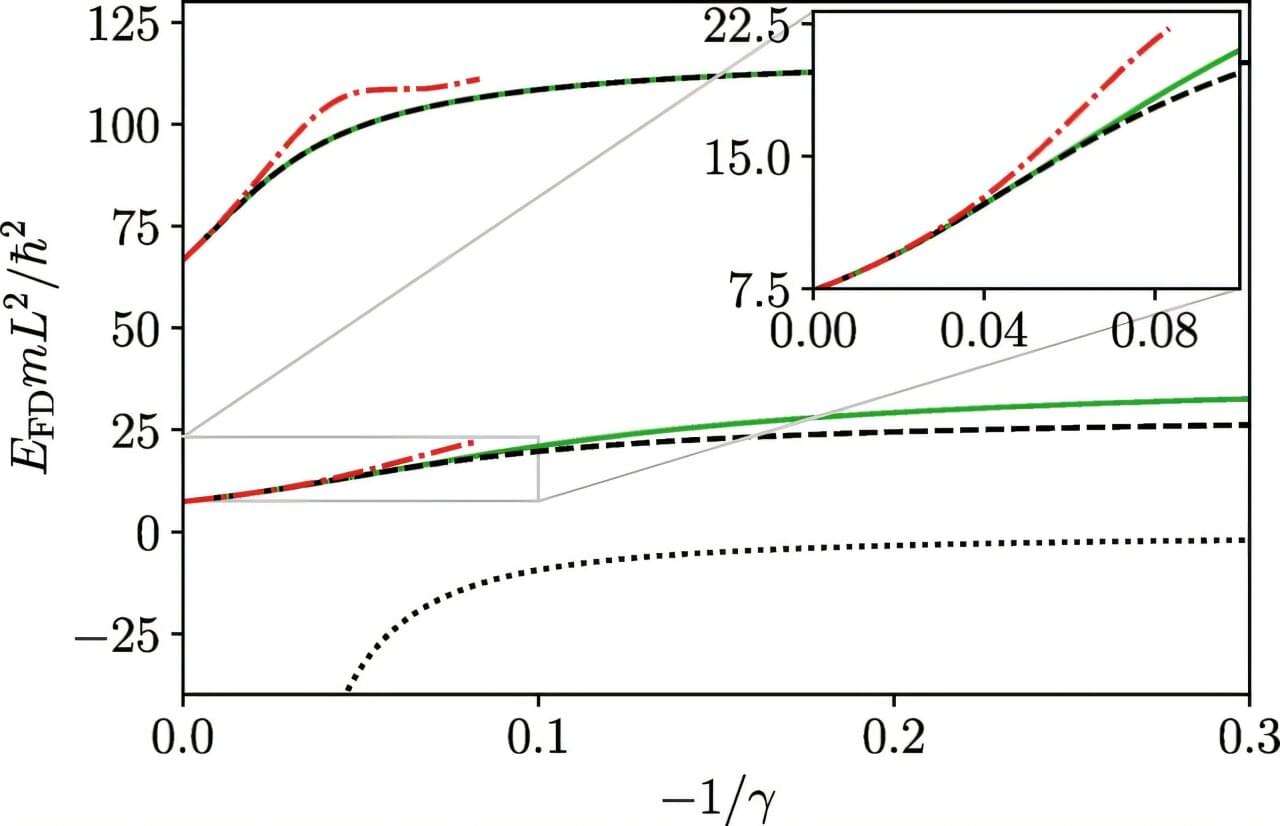The setup is more for studying antimatter than developing a realistic antimatter quantum computer.


Quantum mechanics is generally regarded as the physical theory that is our best candidate for a fundamental and universal description of the physical world. The conceptual framework employed by this theory differs drastically from that of classical physics. Indeed, the transition from classical to quantum physics marks a genuine revolution in our understanding of the physical world.
One striking aspect of the difference between classical and quantum physics is that whereas classical mechanics presupposes that exact simultaneous values can be assigned to all physical quantities, quantum mechanics denies this possibility, the prime example being the position and momentum of a particle. According to quantum mechanics, the more precisely the position (momentum) of a particle is given, the less precisely can one say what its momentum (position) is. This is (a simplistic and preliminary formulation of) the quantum mechanical uncertainty principle for position and momentum. The uncertainty principle played an important role in many discussions on the philosophical implications of quantum mechanics, in particular in discussions on the consistency of the so-called Copenhagen interpretation, the interpretation endorsed by the founding fathers Heisenberg and Bohr.
This should not suggest that the uncertainty principle is the only aspect of the conceptual difference between classical and quantum physics: the implications of quantum mechanics for notions as (non)-locality, entanglement and identity play no less havoc with classical intuitions.


Most people envision vibration on a large scale, like the buzz of a cell phone notification or the oscillation of an electric toothbrush. But scientists think about vibration on a smaller scale—atomic, even.
In a first for the field, researchers from The Grainger College of Engineering at the University of Illinois at Urbana-Champaign have used advanced imaging technology to directly observe a previously hidden branch of vibrational physics in 2D materials. Their findings, published in Science, confirm the existence of a previously unseen class of vibrational modes and present the highest resolution images ever taken of a single atom.
Two-dimensional materials are a promising candidate for next-generation electronics because they can be scaled down in size to thicknesses of just a few atoms while maintaining desirable electronic properties. A route to these new electronic devices lies at the atomic level, by creating so-called Moiré systems—stacks of 2D materials whose lattices do not match, for reasons such as the twisting of atomic layers.

The Large Hadron Collider (LHC) is tough on electronics. Situated inside a 17-mile-long tunnel that runs in a circle under the border between Switzerland and France, this massive scientific instrument accelerates particles close to the speed of light before smashing them together. The collisions yield tiny maelstroms of particles and energy that hint at answers to fundamental questions about the building blocks of matter.
Those collisions produce an enormous amount of data—and enough radiation to scramble the bits and logic inside almost any piece of electronic equipment.
That presents a challenge to CERN’s physicists as they attempt to probe deeper into the mysteries of the Higgs boson and other fundamental particles. Off-the-shelf components simply can’t survive the harsh conditions inside the accelerator, and the market for radiation-resistant circuits is too small to entice investment from commercial chip manufacturers.
For years, NASA has monitored a strange anomaly in Earth’s magnetic field: a giant region of lower magnetic intensity in the skies above the planet, stretching out between South America and southwest Africa.
This vast, developing phenomenon, called the South Atlantic Anomaly, has intrigued and concerned scientists for years, and perhaps none more so than NASA researchers.
The space agency’s satellites and spacecraft are particularly vulnerable to the weakened magnetic field strength within the anomaly, and the resulting exposure to charged particles from the Sun.
Researchers investigating atomic-scale phenomena impacting next-generation electronic and quantum devices have captured the first microscopy images of atomic thermal vibrations, revealing a new type of motion that could reshape the design of quantum technologies and ultrathin electronics.
Yichao Zhang, an assistant professor in the University of Maryland Department of Materials Science and Engineering, has developed an electron microscopy technique to directly image “moiré phasons”—a physical phenomenon that impacts superconductivity and heat conduction in two-dimensional materials for next-generation electronic and quantum devices.
A paper about the research, which documents images of the thermal vibration of individual atoms for the first time, has been published in the journal Science.

Researchers from Trinity College Dublin’s School of Engineering have built a powerful new machine that lets us watch precisely what happens when tiny particles—far smaller than a grain of sand—hit a surface at extremely high speeds. It’s the only machine like it in Europe, and it took over two years to design and build.

A research team led by TU Darmstadt has transformed a difficult problem in quantum physics into a much simpler version through innovative reformulation—without losing any important information. The scientists have thus developed a new method for better understanding and predicting difficult quantum mechanical systems. The study is published in Physical Review Letters.
This problem has long preoccupied quantum physics: How can systems consisting of many atoms, between which strong attractive forces act, be described mathematically? Already for about 10 particles, such systems are at the limits of current numerical methods.
It becomes particularly complicated when the atoms are exposed to an external force. However, this is the case in many experiments with cold atoms due to the way in which motion is restricted to one dimension, for example. Such systems of strongly interacting particles in one dimension were proposed in the 1960s and have since served as a reference problem in theoretical physics. So far, they have only been solved in a few special cases.

Neutrinos are among the most puzzling particles in the universe. Nearly massless and incredibly elusive, they rarely interact with anything, yet they play a deadly role in the life cycle of stars far larger than our sun. These subatomic particles exist in three known types—electron, muon, and tau—and despite decades of study, many of their behaviors remain poorly understood.
Because neutrinos interact so weakly, it is nearly impossible to make them collide under laboratory conditions. As a result, scientists still do not know whether they follow the interaction rules laid out by the standard model of particle physics or if they engage in theorized “secret” interactions exclusive to neutrinos.
In a new study, researchers with the Network for Neutrinos, Nuclear Astrophysics, and Symmetries (N3AS), including members from UC San Diego, have used theoretical models to demonstrate that massive stars in the final stages of their lives may naturally provide the perfect setting for studying these interactions.